International Design Perspectives #1
Live international design events have been a core component of the design ecosystem for decades. They’ve created product awareness for countless brands, offered opportunities for brands and consumers to meet and share, given a platform for boundary-pushing innovation, boosted economies worldwide and of course, given the press something to write about. As such, the curtailing of events as a result of the pandemic has affected the industry in a big way over the past couple of years. But, as we’ve been reporting, shows are slowly making their comeback, and the positive impact is palpable.
As Artistic Director of London Design Biennale Es Devlin explains, design itself is an essential tool in assessing and transforming some of the key issues we face:
“In our global, digital era, design can instantly permeate borders and bridge cultures. As a community of designers approaching shared global challenges from culturally diverse viewpoints, the collective resonance of our ideas and our actions has the power to be truly transformative.”
And big design shows, just like the Biennale, are a key vehicle in the creation of seismic change, something we’ll be covering in a short series called International Design Perspectives.
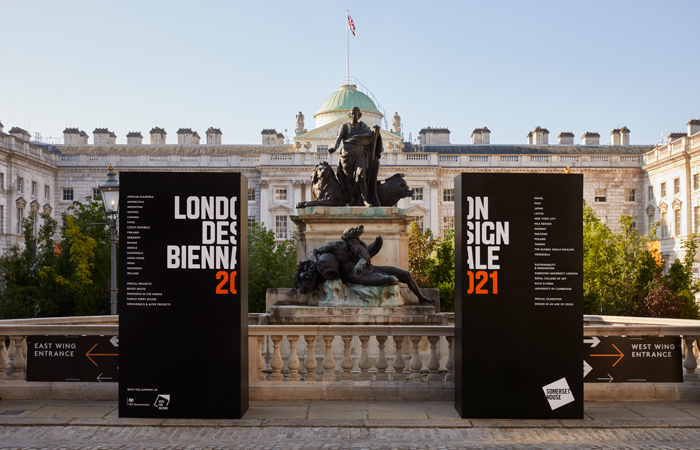
London Design Biennale 2021
During the summer, the third edition of the Biennale returned to it’s regular home at Somerset House, with a host of international designers, artists and curators creatively responding to the show’s theme Resonance, as chosen by Artistic Director Es Devlin. 30 Pavilions, spanning six continents, put on exhibits and installations, taking over the rooms of the glorious building as well as outdoor spaces, notably the main central courtyard usually reserved for summer film screenings and Christmastime ice-skating.
The theme itself came with the tagline: how can design provide solutions to the major challenges and crises the world faces today, with universities, galleries, artists, musicians and design collectives joining the various countries, territories and cities in attempting to answer it. The ultimate aim was to explore how design might play a role in changing the world for the better, with the pandemic and climate change high on the agenda as well as equality, migration, policy making and communication.
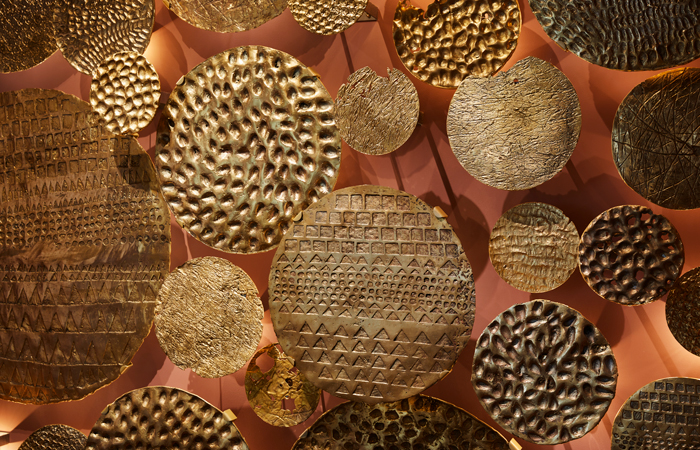
Ghana Amplify
As ever, the pavilions took centre stage inside, with large-scale installations and interventions along with a number of digital showings. Explorations and reimagings regarding colonisation were refreshingly apparent throughout a number of the spaces, not least the Ghanaian pavilion. Amplify explored a link between Ghana, Great Britain and Denmark, using the architectural skin of the 450 year old walls of Somerset House as a starting point; re-evaluating the influences that the African nation had on the western countries as a result of their colonisation in the process.
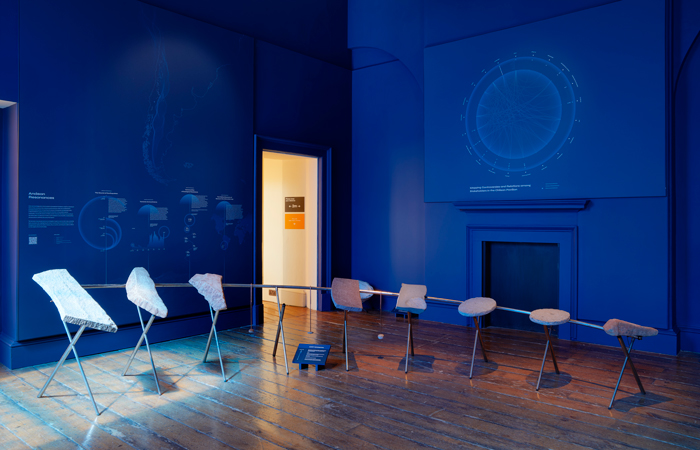
Chile Tectonic Resonances
Chile’s pavilion, title Tectonic Resonances, quite literally examined the sound of rocks. Anthropologists have found that small stones were used as the first instruments to create sound and rhythm for human rituals, although in our contemporary context, the exhibit also underlined the effects geological events in Chile have upon the entire world.
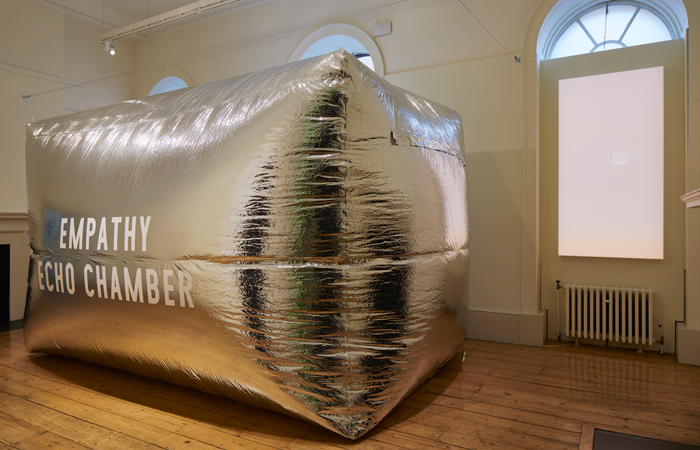
Finland Empathy Echo Chamber
Empathy Echo Chamber, the Finland Pavilion, challenges our 21st century associations of the term “echo chamber,” which has now become synonymous with polarisation and isolation in our information age, as well as challenging the individual to connect with others via face-to-face communication.
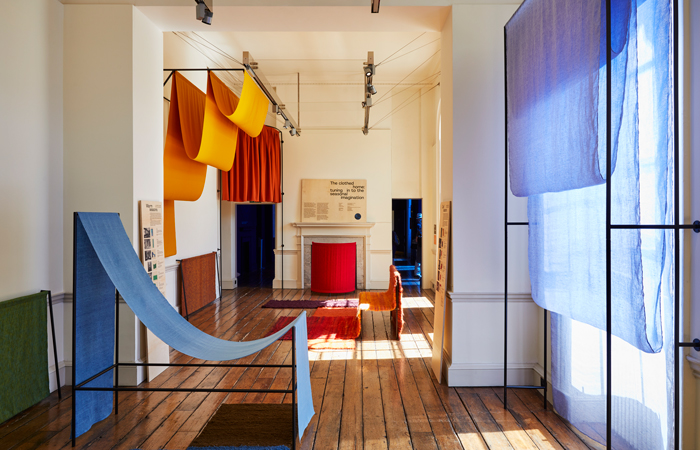
Poland The Clothed Home
Turning the attention to interior design, the Polish pavilion explored the ways in which textiles are used to reflect the rhythm of seasonal changes in domestic interiors. As well as sumptuous shades and sweeping forms, the space also called upon ancient rituals as a means to inspire contemporary climate-responsive design.
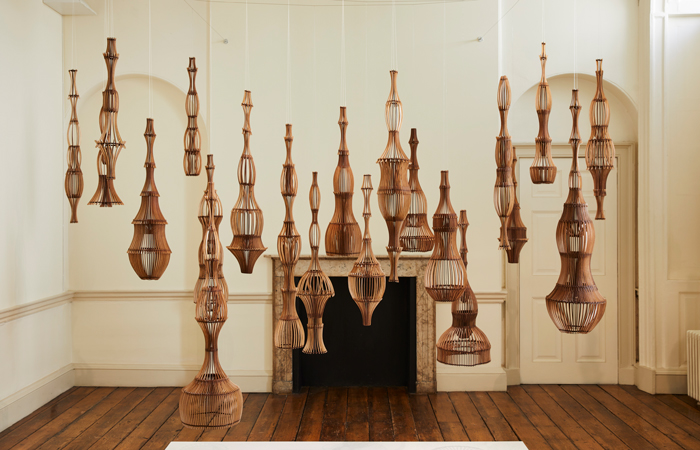
Ruup And Form
Elsewhere, there was also an opportunity for students, members of the public and selected galleries to create exhibits. Within the Sustainability and Innovation section, Ruup & Form created an installation that aimed to resonate with nature by creating sustainably produced forms from natural materials that created a beautiful interplay of light and shadow within the space.
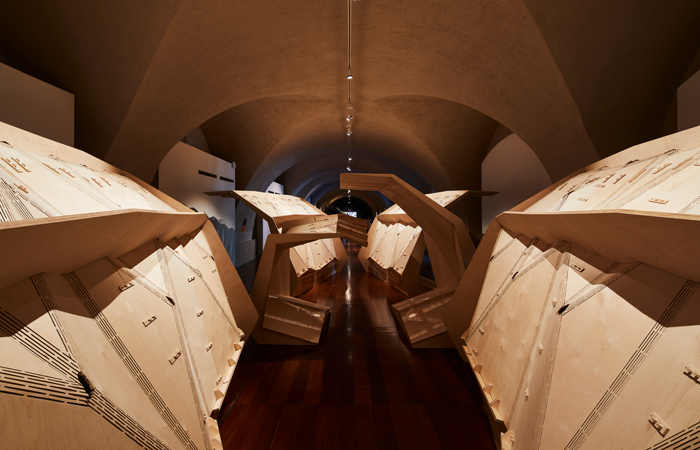
University Of Cambridge PLP Architecture – Unfolding
Where as, University of Cambridge looked to quiz the relationship between nature and the city with Unfolding, a large-scale timber structure. It too was made from natural materials and offered a flexible and adaptable, as well as responsible notion for building for the future.
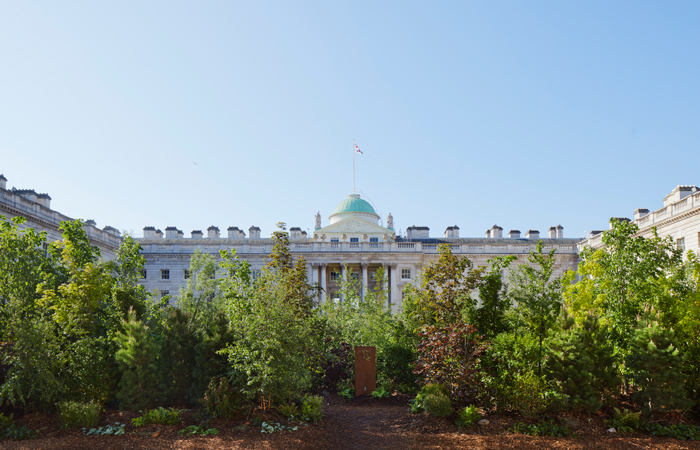
Forest for Change The Global Goals Pavilion
But perhaps the jewel in the crown was saved for the courtyard in the form of Forest of Change – The Global Goals Pavilion. It’s a successful example of an installation that looks to bring and highlight the need for nature in the urban environment. Produced by Richard Curtis in support of UN Global Goals, the immersive installation involved 400 trees that formed a lush forest in the centre of which was a clearing that housed 17 mirrored pillars that displayed the global goals themselves. What’s more, visitors were treated to the sound of birdsong in the heart of the city via recordings curated by musician Brian Eno. As well as drawing attention to the very necessary sustainability goals, the exhibition itself will quite literally live on, with all of the trees being rehomed in the city.
Keep your eyes peeled for more from the International Design Perspectives series.





